 Composting toilets have evoked unpleasant and insecure incidents in the home arena. The users and homeowners really have the intensity to face some of the most terrible incidents. So you need to make the toilet always in a usable condition. The filthy and unhygienic conditions may grow like a regular discrepancy.
Composting toilets have evoked unpleasant and insecure incidents in the home arena. The users and homeowners really have the intensity to face some of the most terrible incidents. So you need to make the toilet always in a usable condition. The filthy and unhygienic conditions may grow like a regular discrepancy.
The facilities are very eye-catching in a composting toilet. This is mainly a waterless system that is even less desirable. Regular maintenance is a must criterion for the other facilities. The cracks and leakages in the fixation scheme need to be well maintained. As it is a waterless system, you can make sure that all the cleaning saves a lot of water. Composting toilets are so amenable as well as they can ameliorate flush systems. This requires extra attention that fulfills the elimination of pests and bad odors. Waterless composting toilets are in a contentious cleaning period. This article will discuss the ins and outs of properly cleaning a composting toilet.
What is a composting toilet?
A composting toilet is a special kind of toilet that has to treat human waste and make the biological process of composting the materials all at once. The prime aspect of the digestion of organic matter happens in a rapid manner in this system. The composite-like material leads to unwanted bigotry making it one of the most vital elements in the genre of composting toilets. You need to maintain a proper ambiance inside the composting toilet chamber.
It generally produces some of the greatest algae and bacteria inside the chamber. This process is an incessant mixture of surpassing the quantity of humus-like substances, like the high production of humans that enriches the manure. They can also be referred to as dry toilets because water is not used for flushing. The toilet bowl is architectured in such a method that the composite pile can separate the ultimate contents. The solid waste insisting with the liquid urine makes a compost that can be used as compost. The toilet bowl always produces foul smells, so it needs a clear check-up and maintenance.
What Parts of a Composting Toilet Need to Be Cleaned?
The most significant parts of a composting toilet are the toilet seat, lid, and bowl. The pedestal instructions are some of the most engaging elements of the composting toilet. Here we have some significant parts that need to be cleaned on a regular basis so that it remains ever-fresh.
Toilet Seat and Lid
The most significant area of a composting toilet is its Seat and Lid. You directly interact with this area and spend a lot of time here. This is the reason that you must prioritize it when it is all about cleaning and composting toilets. The right cleaning products can be so much handy in performing the best cleaning process. The composting system is enriched with strong chemical ingredients. So rinse and apply water onto the Seat and Lid to make it a safe and sound place. 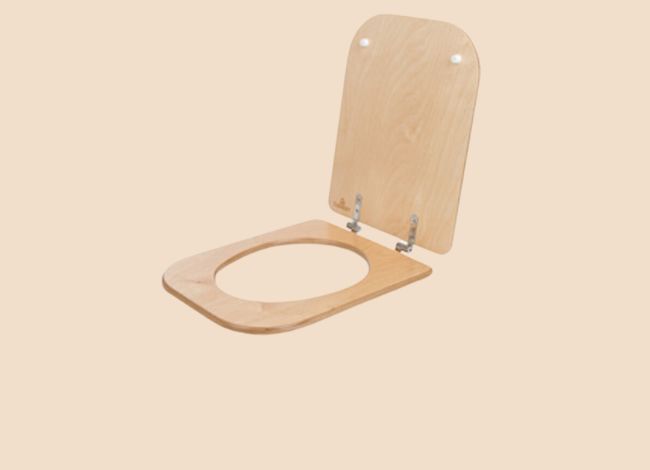
Bowl or Pedestal
Cleaning this portion is much like the other conventional toilets. There is a system for cleaning the flushing toilets, and the process can be implemented with natural flush enzymes. It is highly recommended fact to have the best use of Toilet cleaning procedures. You may have known that the detergent category seems to be so simple. In a broader sense, we find that a bowl or pedestal is actually the real meaning of a toilet. You can squirt all the water into the main scenario. Allow it to be the main compost toilet lot. In a few minutes, you can dilute the cleaning of the total system with a toilet brush.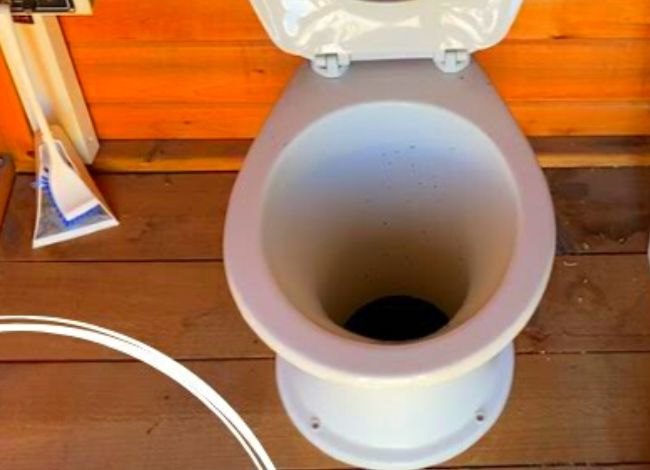
So with the help of a scrubber or a brush, systemically rinse the whole thing. The pedestal combination has some odd corners where germs build easily. So, clean around the bowl if it looks so dirty. You can sprinkle some water and use toilet paper to wipe the internal parts of the pedestal.
You need to avoid all the toilet wipes. The reason is they contain so many perilous strong chemicals that might be proven so harmful to the compost. The composting toilet has so many portions, but we reckon this is the most crucial one. From time to time, it digests the waste and turns it into compost. You can apply some of the greatest natural detergents and some bacterial digestants, which makes it one of the best types of toilets.
A complete process of cleaning the composting toilet
A composting toilet is not like a normal toilet. So the process of cleaning this naturally adds some more things to the list. Our panel has demonstrated the full process of cleaning the composting toilet in this section,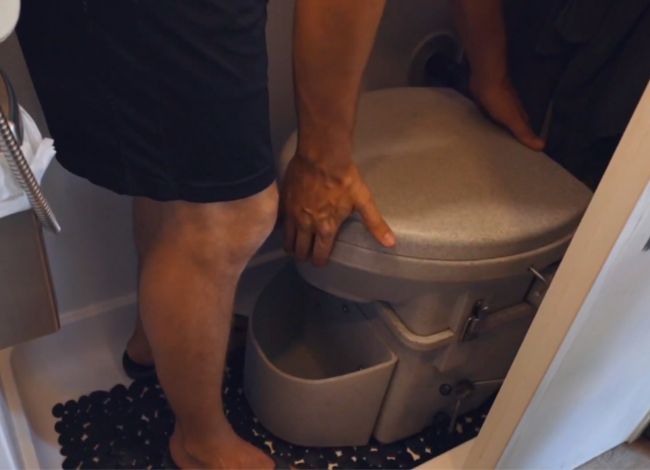
Step 1: Clean Outside
Cleaning the external portion of the toilet is the best process for cleaning the composting toilet. The tank, seat, and rim must be spotted with clear deliverables if it has anything dirty there. You must use a disinfectant cleaner so that all the skid marks get destroyed. The composting toilets are simply reckoned as the smooth plastic item. In some cases, it has a fiberglass interaction.
Step 2: Use Cleaner
The second thing is all about removing the plastic bowl skid marks, and for that, apply the composting toilet cleaner. You can go for Drano Max or Lysol, as these are considered some of the Rock-solid cleaners for the bathroom. Then you need to Rinse, dry, and scrub the toilet bowl.
Next is to remove the toilet from the RV. Introduce a compostable plastic bag and then dump all the solids into the mainstream scenario. In the meantime, all the waste will break down rapidly in the landfill. The faster it goes it makes all the things traditional garbage bins. It needs a proper breakdown. 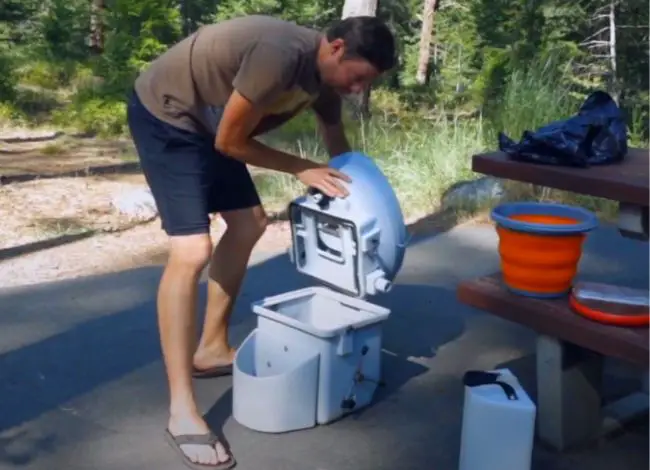
Step 3: Clean the Inside
In this step, you need to use a toilet brush to add some amounts of cleaner inside the toilet bowl. You need to rinse all the composition and add some liquid cleaners. The compost’s moisture level needs to be adjusted as they are the most significant issue. The proper handling and semantic cleaning of the entire set can be so vital. You must also check the sewer line in a well-maintained way. The water treatment processing could be much more enticing in that all the solids and liquids remain separated. The dusty clumps clustering with the systematic inclusion should be insisted with a coco coir layer. This immaculate system adjoins the Tie up with a thorough cleaning routine.
Step 4: Rotate the composting drum
After you have adjusted all the measures now, it is time to enhance the amounts of composting. The toilet’s manufacturer recommends composting bacteria to make it workable. The production of compost is genuinely a modified territory. Then perform a rotation by taking so much rake fresh waste material. The periodic emphasis on rotating the composting drum makes it even more sophisticated. These two chambers even need proper cleaning. 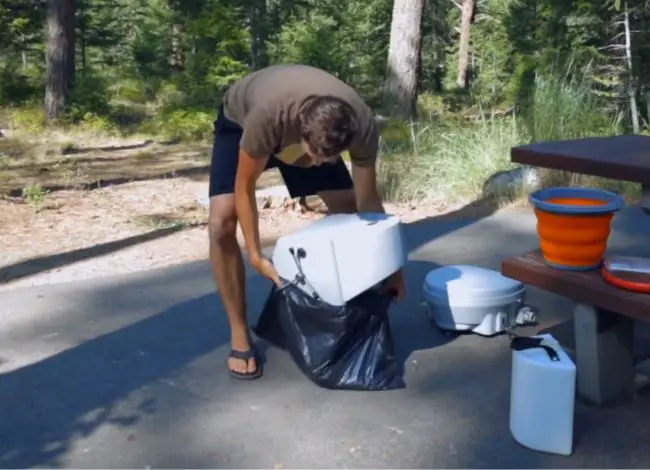
Step 5: Empty The Chamber
Though you all have set and prioritized the utter compost finishing drawer turning with a similar compost juncture, the base of the toilet is filled with so much compost that you need to separate that with a keen eye. Clean the outside of the toilet. The toilet Body with Bowl has the most impetus segment of all time.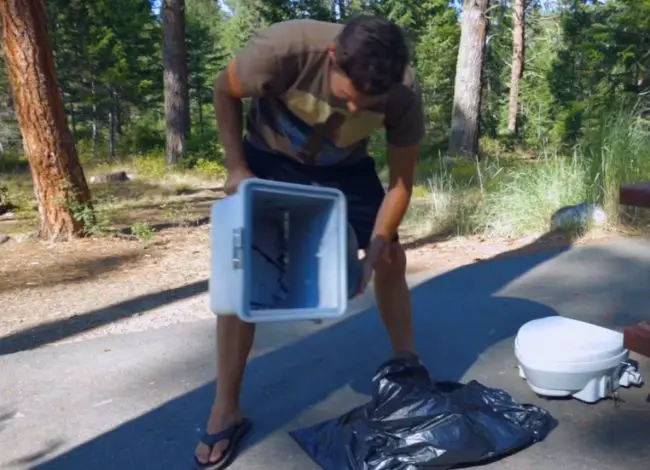
You need to Open the upper section door of the composting chamber. The rake with the waste pile has followed the manufacturer’s instructions for further implications. All the carbon-based materials like straw and sawdust maintain the proper moisture in the compost.
Regularly check the liquid chamber apparatus. It also evaporates liquid waste so predominantly that it seems a particular perambulate. You need to siphon off excess elements from the fertilizer. Empty the compost by applying gloves to your hand. The bottom compartment is used for the composting chamber. Use a hand shovel and bucket to collect all the waste. All can use finished compost in the plantation aspect.
Step 6: Final Task
Finally, remove a rubber seal from the lower and upper compendiums and use rubber striping to avoid bad smells. The toilet prevents much of the gas from invading the living space. All the doors and windows must be of a typical brick home. 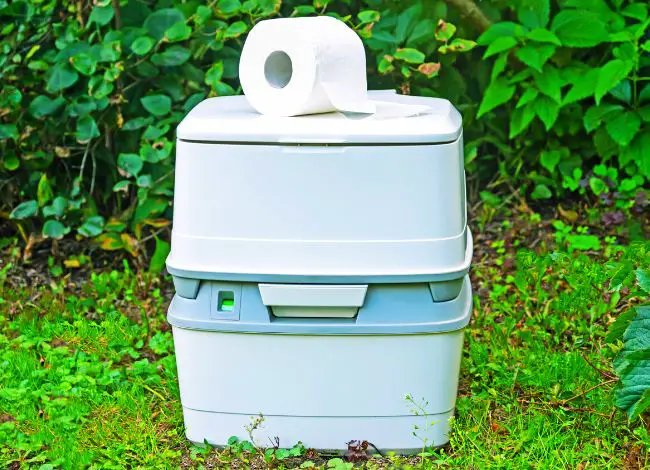
Dump all the old ones and install a new toilet bowl section. When the fan blades get dirty, then inspect and clean all the miniatures. The toilet fan is always in rotating mode. Then brush off the tiny mesh screens. Finally, wash away all the things after it has been entering the toilet base area. You need to implement a 12-volt fan in the RV to avoid bad odors. If the blades break, then it will create a bad nuisance in the system. You can add some sugar daily to slash down odor from liquid waste. Also, Add a cup of vinegar to the liquid waste container so that it can be free from all foul smells.
Conclusion
Composting toilets have been so popular worldwide that people are increasingly using them. The area where the water facilities are scanty is the ideal one. Besides, it is best for areas with inadequate electricity and scanty plumbing facilities. It also slashes down the dependence on public facilities. It is worth investing in.
The Environmental Protection Agency has marked composting toilets as one of the best green products. This item is a responsible choice if you want to degrade the water bill. Composting toilets need no water as well as it is regarded as the most effective waste solution. Self-contained composting toilets are very easy to install, but the thing is, they are so tough to clean. Regularly inspect the ventilation system, as it is the most enticing part of the Composting toilet. The cellar basement stays at the lowest level. Central systems have the ability to imply waste. Composting toilets have pathogens in their substrate. Heat, water, and all the aspects make it the most inclusive strainer. We hope you follow all the guidelines in this article to clean your Composting toilet easily.
We are really lucky to have a hard-working, multi-skilled plumber on our team. Collin D. Gallegos, a professional plumber who has worked with us since 2012, is an expert in vent, septic, and drainage systems. He is a Certified Master Plumber and has worked on various commercial plumbing projects. He usually helps our readers resolve plumbing and pipe-related issues with a proper DIY troubleshooting and repair guide.
